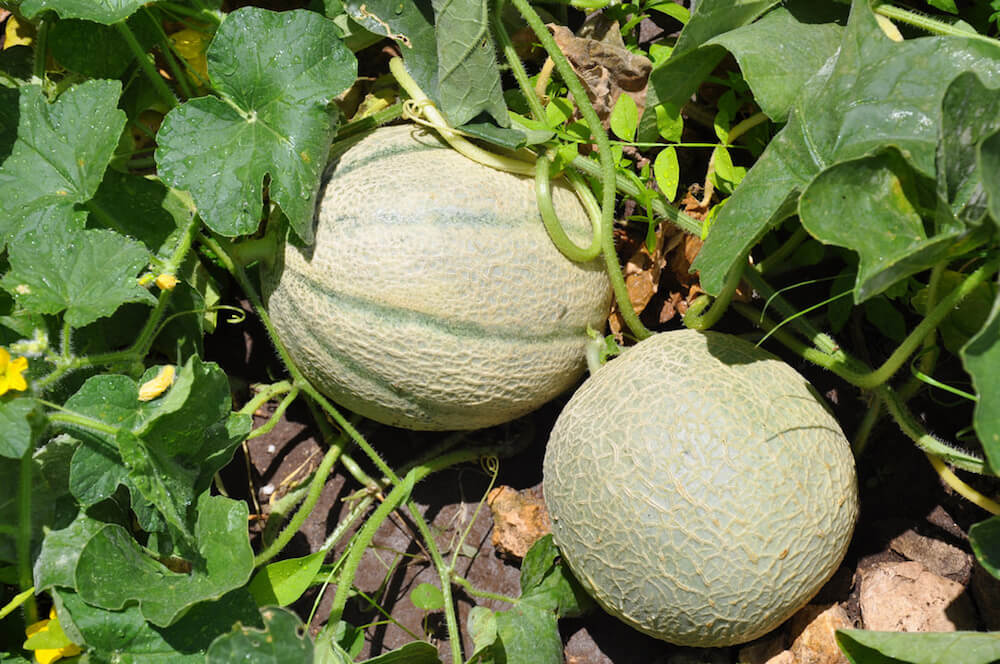

They grow considerably slower when temperatures are below 60☏. The optimal temperature range for growing cantaloupe vines is 75-95☏. They’re part of the Cucurbit plant family, along with cucumbers, honeydew melons, watermelon, and squash. cantalupensis) is a variety of muskmelon that most likely originated in northern Africa and southern Asia. Resolving Common Pest and Disease Issuesīest Tips for Growing Cantaloupe from SeedĬantaloupe ( Cucumis melo var.Harvesting and Storing Homegrown Cantaloupe.Growing Cantaloupe from Seed in Containers.Best Soil and Fertilizer for Growing Cantaloupe.Best Tips for Growing Cantaloupe from Seed.
CANTALOUPE SEEDLINGS HOW TO
Read on to discover how to grow cantaloupe seeds in your USDA planting zone. Over the years, cantaloupe growers have learned numerous useful tricks for planting cantaloupe in cooler climates. If you’ve never tried growing cantaloupe from seed because you’re concerned that they won’t grow well in your region, think again.

It typically takes between 35 and 45 days after flowering for cantaloupe fruit to ripen. Doing so gives the young plants a head start once the weather warms up enough for transplanting. In most growing climates, gardeners begin growing cantaloupe seeds indoors several weeks before the forecasted last frost date. They’re extremely sensitive to cold weather and won’t usually survive temperatures below 40℉.

On average, cantaloupes are ready to harvest approximately 70-100 days after planting seeds. Are you ready to discover how to grow cantaloupe from seed so you can enjoy a bountiful harvest of juicy, sweet melons? With the proper environmental conditions, growing cantaloupe from seed is pretty straightforward. You can find that information (and more!) in our complete guide on growing cantaloupe.Cantaloupe vines are heat-loving plants that yield delicious rewards at the end of the growing season. Of course, the same rules apply to container grown cantaloupe that apply to cantaloupe grown in a traditional garden, such as the amount of sunlight they need and when to plant them. Be sure to adjust your schedule to water more frequently. You will likely notice that cantaloupe grown in containers are much thirstier than cantaloupe grown in a traditional garden bed. Hopefully by now you’ve seen that growing cantaloupe in pots is pretty easy so long as you have the right container and right soil. Final Tips for Growing Cantaloupe in Pots Instead, opt for potting soil or soil specifically designated as safe for container gardening. It will trap moisture in the container to the point where it can cause fungal issues for cantaloupe as well as root rot. Traditional soil, such as the type of dirt you can dig up in your backyard, is much too dense for cantaloupe planted in pots. The Best Soil for Growing Cantaloupe in Containersĭrainage also plays a key part in the type of soil you choose for cantaloupe containers. If water doesn’t leak through the bag quickly, you may want to add one or two holes to the bottom to keep the roots of your cantaloupe plant healthy and happy. If growing your cantaloupe in grow bags, be sure to test how well they drain before planting. Most terracotta pots also come with a hole in the bottom for additional drainage. Terracotta pots, along with fabric grow bags, are a great container option for cantaloupe because they are naturally porous. If you’re using a plastic container for growing cantaloupe, it’s crucial there are 2 - 4 holes in the bottom to allow excess water to drain. If your cantaloupe sit in standing water for too long, their roots will rot and the plants will likely wither away. Poor drainage is the number one killer of cantaloupe grown in pots. What does matter, however, is how well that material releases excess water. When choosing a pot to plant cantaloupe in, the type of material it’s made out of doesn’t really matter. Plastic pots, terracotta, and fabric grow bags all make fine containers for cantaloupe. The Best Type of Container for Cantaloupe


 0 kommentar(er)
0 kommentar(er)
